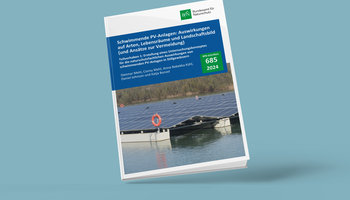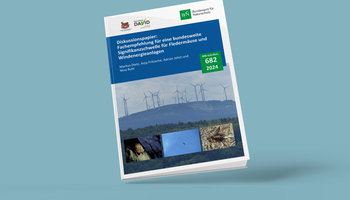Contact
National Association of German Avifaunists e.V.
Dachverband Deutscher Avifaunisten e.V.
An den Speichern 6
D-48157 Münster
Sven Trautmann
Tel: +49 251 21014014
sven.trautmann(at)avoid-unrequested-mailsdda-web.de
The project investigates changes in the breeding populations of bird species, especially those which are considered as conservation indicators of species diversity and landscape quality. In combination with other environmental parameters, the project aims to analyse the causes and factors that control the development of these populations.
The project will provide information for the ecological and political support and communication of national indicators for biodiversity (National Biodiversity Strategy, National Sustainability Strategy). These data contribute to the analysis of the causes of threats to bird species and lay the foundation for planning future protection measures. In order to comply with the United Nations' Convention on Biological Diversity (CBD) and the reporting duties of the EU Birds Directive, the causes of these threats need to be studied as carefully as possible. The findings from this analysis form a knowledge and argument base for nature conservation policy decisions, thus supporting the implementation of No. 2.3 of the EU Biodiversity Strategy 2020 which aims to increase knowledge of native biodiversity. The project also supports the implementation of Section 6 of the Federal Nature Conservation Act (BnatSchG). The results present the current status and the changes in nature and landscape, including their causes and consequences.
The project is divided into two sections. In the first step the bird monitoring data is selected and processed. Data series are also compiled on possible influencing factors for the population changes. Based on this examination, suitable statistical methods for the evaluations in the second part are tested and selected.
First the population development (trends) of the indicator bird species are examined for regional or habitat differences. Both long-, medium- and short-term features and differences between specific habitats are recorded. Next the causes of the observed development are researched. The collated data series on a range of possible influencing factors are then analysed for their explanatory power. The driving abiotic and biotic factors for population changes need to be identified and the relative strength of the individual factors described. Influencing factors that can be ascribed to the energy transition are included as predictor variables in the modelling. Habitat overlap with the risk factor of (onshore) wind power is looked at separately for sensitive species. Existing and impending threat potentials will be demonstrated and their spatial extent documented.
Based on the results of the two stages, conservation recommendations will be derived for different forms of land use and management.
In addition to monitoring population changes, data from the Common Bird Monitoring Scheme are suitable for a detailed analysis of the factors controlling population changes. Data on the development of potentially relevant environmental parameters can be used in statistical modelling (mixed model) to explain the variation in population trends of bird species or groups of species that function as response variables. This requires the existence of meaningful data to describe environmental parameters considered as relevant over a suitable period and spatial resolution. As bird populations are affected by higher-level factors such as weather and particular species characteristics in addition to habitat influencing factors that vary regionally, a comprehensive analysis of the drivers of population change requires a large amount of data that directly reflect influencing factors or are strongly correlated with them.
As part of the research and development project, a check was made of the existence of data series for modelling the influencing factors for population changes. The project identified 98 possible influencing factors for controlling population dynamics for a selection of indicator bird species, and looked at the availability of suitable data sets.
While the availability of data varied considerably for different habitats, there were clear gaps in terms of highly relevant influencing factors such as e.g. predation or land consolidation. Although the data available enables a comprehensive modelling of the causes of population changes for individual habitats, at this point a complete analysis taking account of all the key influencing factors is not possible. One problem is that many environmental parameters are not recorded annually (particularly parameters on forest development) or not using consistent methodology (e.g. grassland categories). Data on environmental parameters are often only available in a highly aggregated form and are not suitable to represent specific influencing factors that often vary greatly in intensity on a regional basis. For example, data on pesticide use are only available as national sales figures. In addition, there are often comprehensive raw data for various parameters (e.g. water table drawdown) that are not processed in terms of time and location and so cannot be used for analyses in other specialisms.
At the same time it was clear that various stakeholders had started to collect and regularly update data series on important influencing factors. Even though some data series are not suitable for analysing population changes over longer periods due to comparatively short collection times, these data series should be useful in the future. In addition, the BfN is preparing to set up a national ecosystem monitoring project on the Common Bird Monitoring trial areas. This project will in future provide valuable targeted information on the causal analysis.
Dachverband Deutscher Avifaunisten e.V.
An den Speichern 6, 48157 Münster
Sven Trautmann
Tel.: +49 251 21014014
sven.trautmann(at)dda-web.de
Malte Busch
Tel.: +49 (0251 / 21014015
busch(at)dda-web.de
Federal Agency for Nature Conservation (BfN)
FG II 1.3 Monitoring
Konstantinstr. 110
53179 Bonn
Rainer Dröschmeister
Phone: +49 228 84 91 1461
DroeschR(at)BfN.de
03.04.2024
Weiter

03.04.2024
Weiter

19.03.2024
Weiter
